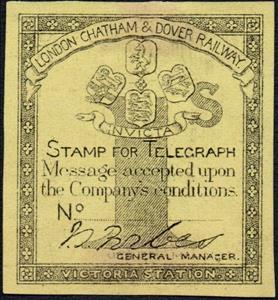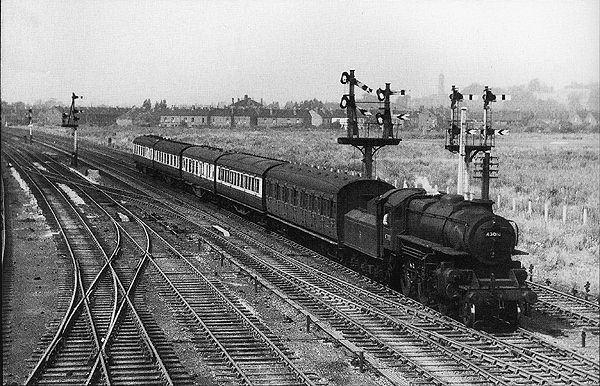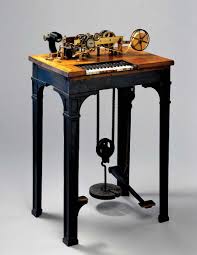Stamp: Coats of arms and numeral (United Kingdom of Great Britain & Northern Ireland 1863)
Coats of arms and numeral (United Kingdom of Great Britain & Northern Ireland 1863)
01 January (United Kingdom of Great Britain & Northern Ireland ) within release London, Chatham and Dover Railway goes into circulation Stamp Coats of arms and numeral face value 1 British shilling
| Stamp Coats of arms and numeral in catalogues | |
|---|---|
| Colnect codes: | Col: GB LCD1863-04 |
Stamp is square format.
Signature of the company's general manager, J. S. Forbes.Also in the issue London, Chatham and Dover Railway:
- Stamp - Coats of arms and numeral face value 3;
- Stamp - Coats of arms and numeral face value 3;
- Stamp - Coats of arms and numeral face value 1;
- Stamp - Coats of arms and numeral face value 1;
Stamp Coats of arms and numeral it reflects the thematic directions:
A coat of arms is an heraldic visual design on an escutcheon (i.e. shield), surcoat, or tabard. The coat of arms on an escutcheon forms the central element of the full heraldic achievement which in its whole consists of shield, supporters, crest, and motto. A coat of arms is traditionally unique to an individual person, family (except in the United Kingdom), state, organisation or corporation.
A number is a mathematical object used to count, measure, and label. The most basic examples are the natural numbers 1, 2, 3, 4, and so forth. Numbers can be represented in language with number words. More universally, individual numbers can be represented by symbols, called numerals; for example, "5" is a numeral that represents the number five. As only a relatively small number of symbols can be memorized, basic numerals are commonly organized in a numeral system, which is an organized way to represent any number. The most common numeral system is the Hindu–Arabic numeral system, which allows for the representation of any non-negative integer using a combination of ten fundamental numeric symbols, called digits. In addition to their use in counting and measuring, numerals are often used for labels (as with telephone numbers), for ordering (as with serial numbers), and for codes (as with ISBNs). In common usage, a numeral is not clearly distinguished from the number that it represents.
Railways - Transportation system made up of metal rails which is designed to allow trains to maneuver on the tracks from one location to the next.
Telegraphy is the long-distance transmission of messages where the sender uses symbolic codes, known to the recipient, rather than a physical exchange of an object bearing the message. Thus flag semaphore is a method of telegraphy, whereas pigeon post is not. Ancient signalling systems, although sometimes quite extensive and sophisticated as in China, were generally not capable of transmitting arbitrary text messages. Possible messages were fixed and predetermined, so such systems are thus not true telegraphs.




